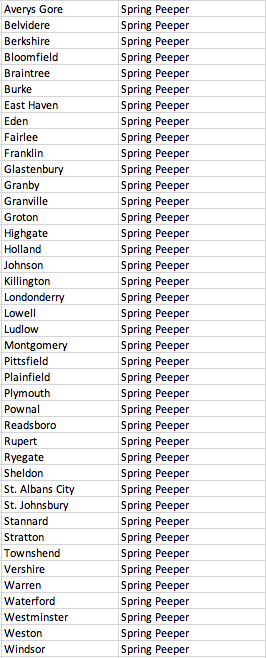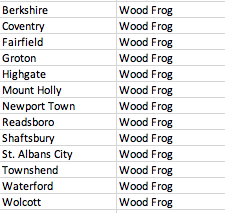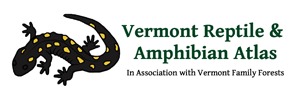to Herpers: Spring Amphibian Migration
Herpers, reports coming in from last night reflect what we had suspected: most of the early amphibian migration to wetlands in the Lake Champlain Basin has ended and Steve Parren and others report the earliest breeders (Blue-spotted Salamanders and Wood Frogs) starting to leave the wetlands.
Rob H from West Rutland reported more snakes moving last night than amphibians. He saw DeKay’s Brownsnakes and a Common Gartersnake. Both of these species are pretty cold tolerant and occasionally seen moving during amphibian migrations. In addition, Chrystal C contributed the first ever report and photo of a Red-bellied Snake from Landgrove.
I still have not received any reports of Spotted Salamander egg-masses but I expect I will today or later this week. Spring Peepers are in full chorus here in the Basin and we have received many reports of Wood Frog egg masses.
That said, amphibian activity is finally getting going in the mountains. Preston T and I headed to Hancock last night to try to photo-document Spotted Salamanders, Wood Frogs, and Spring Peepers for the first time. We knew they were there, but we needed to get some photo-documentation. We found and photographed all three of these species in about an hour’s time. The bulk of them were found between Middlebury College Snow Bowl and Middlebury gap along Route 125. This was at an elevation of 2,000 ft. but the slope that they were coming from faces south, so it had lost most of its snow. The pond they were headed to was still mostly ice with only small areas of open water around its edges. The north-facing slopes still were covered with snow. I was surprised to find that even American Toads were moving at that elevation. In my experience, they primarily move when the night-time temps are warmer and we barely reached 50 F at that elevation.
Kate K and I had spent a couple days in Hancock late last year trying to document Spotted Salamanders, Wood Frogs and Spring Peepers with no success and as I mentioned above Preston and I found them all within an hour. It shows how much of an opportunity is presented by these spring migrations. It makes amphibians much easier to find.

Vermont towns where we need documentation of Spring Peepers (2019)
With that in mind, I have attached the complete lists of all towns in Vermont for which we need photo-documentation for the three common state-wide species that are moving right now. I have not updated the lists with all the records that came in today yet. If you can help with a photo of any of these town/species combinations, we would really appreciate it. And please do forward these lists to any person or forum (FPF, Facebook, etc.) you think might in interested in helping out.

Vermont towns where we need documentation of Wood Frogs(2019)

Vermont towns where we need documentation of Spotted Salamanders (2019)

